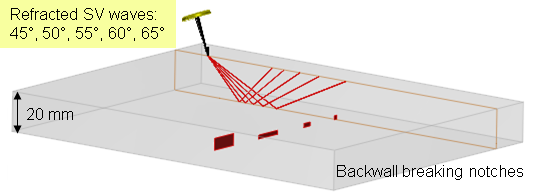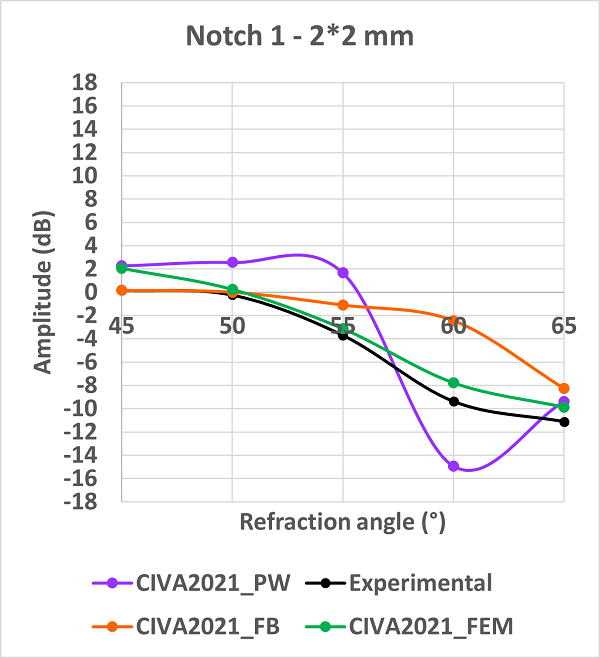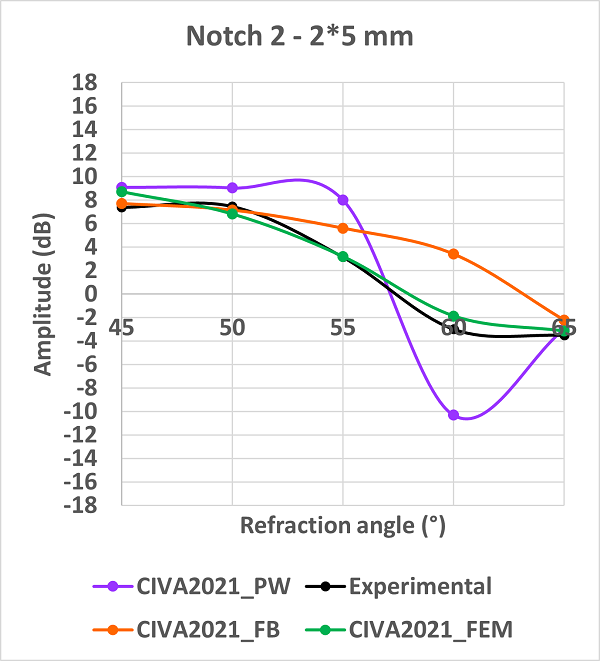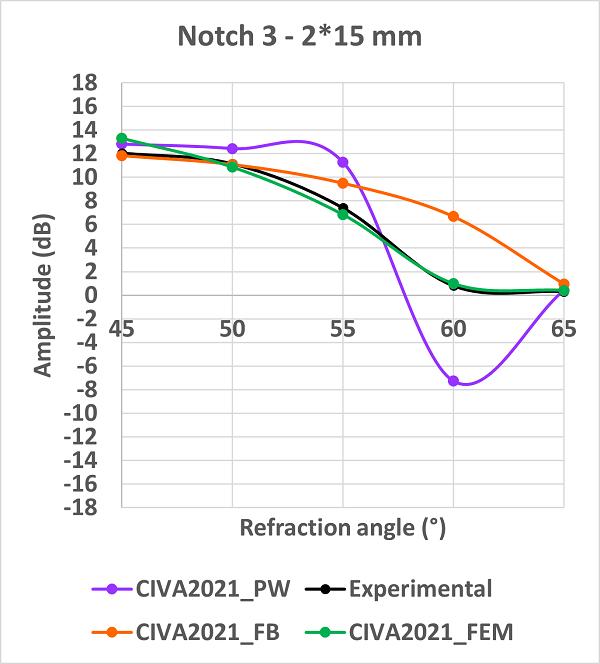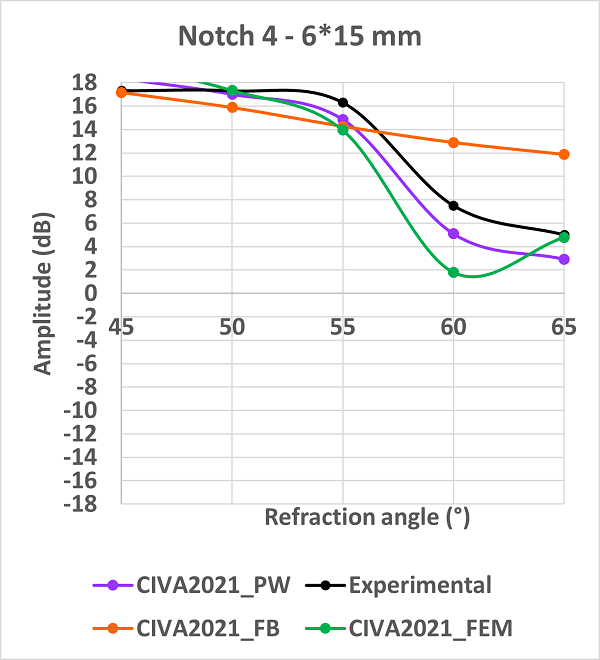UT – Corner echoes with SV mode: Simultaneous influence of the notch length and the refraction angle
Summary
CONFIGURATION
In the following configuration, the specimen is a planar steel mock-up of 20 mm thickness containing 4 backwall breaking notches: 3 notches of dimensions 20×2 mm, 20×5 mm, 20×15 mm and a notch of dimensions 6×15 mm.
A Ø12.7 mm immersion probe is used in order to generate SV waves at different refraction angles with a water path of 20 mm.
RESULTS
Each notch is associated with a number in order to facilitate the results display:
| Notch number | 1 | 2 | 3 | 4 |
| Height | 2 mm | 2 mm | 2 mm | 6 mm |
| Length | 2 mm | 5 mm | 15 mm | 15 mm |
SV45 to SV65 inspections are performed with a Ø12,7 mm circular immersion probe functionning at 4.5 MHz with 20 mm water path. The input signal central frequency is 4.5 MHz, the bandwidth 73% and the phase 270°.
The results are calibrated relatively to a Ø2 mm SDH of 40 mm length located at 15 mm depth.
Update: These results are obtained with CIVA 2021. Experimental results (in black) are compared to simulation results from different models available (FB = Full Beam; PW = Plane Wave approximation, FEM = Finite Element Model)
The results obtained with the different models for the beam/defect interaction simulation lead to different results. Thus, the Plane wave approximation model lead to the biggest discrepancies for refraction angles between 55° and 60° beacuse of their proximity with the 57° T-waves critical angle. The Full Beam model reduces this discrepancy but it remains quite strong at 60°. On the other hand, simulation results with the Transient FEM model available since CIVA 2020 show very good agreement with experimental data. The differences observed with Full Beam and Plane Wave approximation models around the critical angle are corrected.
For the notch 6x15mm, the best simulated results are obtained with the Plane Wave approximation model. The FEM model also gives a good idea of the amplitude trend vs refraction angle but the amplitude difference at 60° is stronger than with the plane wave approximation model.
Continue to Conclusion and phenomena explications
Back to Corner Echoes with SV mode
Back to Corner Echoes

